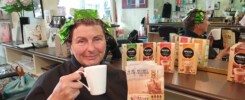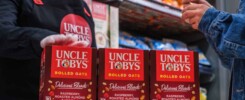Product trial is often the key to the successful product launch of an FMCG brand.
Product sampling not only alerts your potential customers to the existence of your product – not always easy in a cluttered market – it also enables them to try it without the risk of a wasted purchase. It is well known that if a customer tries a product and likes it they are far more likely to purchase.
However, before you embark on a large scale sampling campaign you should first establish whether sampling is the right strategy to help drive your particulart brand. Here are a few questions that should be considered when making this decision:
1. Will your product deliver a new experience? In general, sampling and product trial is mostly effective for products that will surprise, delight, intrigue and motivate your customers when they try. For example, you may have an exciting new flavour, a novel format, a unique experience. If you have a me-too brand or a product that does not deliver an obvious positive experience, product trial may have limited impact.
2. Are you price compettive? If you are driving immediate sales while sampling, having a special offer can dramatically lift sales.
3. Do you know who is likely to buy your product first? Samples are expensive and a lot of budget can be wasted if you try to sample ‘everyone’. Think who are likely to be your early adopters, what type of person will be most attracted to your product.
4. Do you know where to find these potential customers? Again, a lot of budget can be saved if you can reach your clients in a targeted way e.g. your product could be designed for small dogs, in which case sampling through a dog groomers could deliver higher ROI than mass mailing through the post.
5. Does your product require education/explanation. If so, a high engagement campaign may be needed eg. trade demos in store demos.
6. Are your samples cheap to produce? If your product is easy to undertstand, your samples and cheap and you are confident most of your target customers will really like it then you are likely to get a good return from mass targeted sampling. For example THE IN GROUP runs sampling campaigns through locations like business lunch rooms, hair salons, sports clubs, schools and more. This technique gives you cost effective mass reach that delivers higher engagment and more targeting that an approach like letter box drops.
7. What has worked in other markets for your product or similar products?
Once you have answered these questions (or not answered!) you should have a clearer idea as to whether or not you should include product sampling as part of your launch strategy or realise that there is still a bit of work to be done to better understand your brand and your customer.
Chris CoffeyManaging DirectorThe In Group021 552 390

